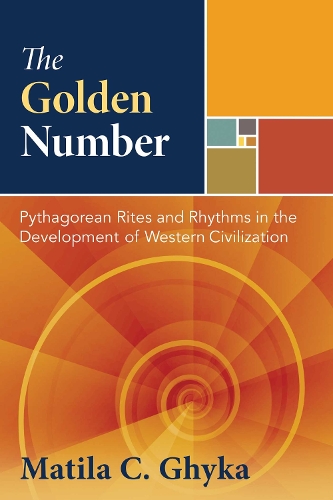
The Golden Number: Pythagorean Rites and Rhythms in the Development ofWestern Civilization
(Hardback)
Publishing Details
The Golden Number: Pythagorean Rites and Rhythms in the Development ofWestern Civilization
By (Author) Matila C. Ghyka
Introduction by Paul Valry
Inner Traditions Bear and Company
Inner Traditions Bear and Company
30th October 2016
United States
Classifications
General
Non Fiction
Mind, body, spirit: thought and practice
133.335
Physical Properties
Hardback
448
Width 152mm, Height 229mm, Spine 28mm
780g
Description
The first English translation of Ghykas masterwork on sacred geometry
Reveals how the Golden Number Phi underlies the spiritual nature of beauty and the hidden harmonies that connect the whole of creation
Explains how the spiritual mysteries of the Golden Number were passed down in an unbroken line of transmission from the Pythagorean brotherhoods through the medieval builders guilds to the secret societies of 18th-century Europe
The Golden Number, or Phi (), is a geometric ratio found throughout nature, often underlying the dimensions of objects considered especially beautiful. Simplified as 1.618 and symbolized by the Fibonacci sequence, the Golden Number represents the unique relationship within an object where the ratio of a larger part to a smaller part is the same as the ratio of the whole to the larger part. It appears in the proportions of the human face and body as well as in the proportions of animals, plants, and celestial bodies.
Called the divine proportion by the monk Fra Luca Pacioli, whose book on the subject was illustrated by Leonardo da Vinci, Phis use in art and architecture goes back at least to the mystical mathematics of Pythagoras and his followers in the sixth century BCE. The perfect synthesis of spiritual and material, it can be found in the measurements of the sacred temples of Egypt, Ancient Greece, and Medieval and Renaissance Europe. The asymptotic series of integers that define Phi represent the macrocosm and microcosm as portrayed in Platos concept of the world soul.
Presenting Matila Ghykas classic treatise on the Golden Number for the first time in English, this book reveals the many ways this ratio can be found not only in the organic forms of nature--such as in the spirals of shells or the number of petals on a flower--but also in the most beautiful and highest creations of humanity. One of the most important concepts of sacred geometry, its mysteries were passed down in an unbroken line of transmission from the Pythagorean brotherhoods through the medieval builders guilds to the secret societies of 18th-century Europe. Ghyka shows how the secrets of this divine proportion were not sought merely for their value in architecture, painting, and music, but also as a portal to a deeper understanding of the spiritual nature of beauty and the hidden harmonies that connect the whole of creation.
Reviews
Finally ... a complete translation of Matila Ghykas masterwork. This foundational book is essential reading for anyone interested in the golden section, harmony, proportion, and beauty in nature, art, and architecture. * David Fideler, author of Restoring the Soul of the World *
Matila Ghykas The Golden Number is the most comprehensive and convincing demonstration that the golden ratio is indeed, as Pythagoras had posed it, the root number of the universe, expressed both in the living plants and animals and in matter forms at all scales--from galaxies, to crystals, to quantum waves--thus ever-present in mathematics, cosmology, architecture, music, and art at large. Jon Grahams excellent translation couldnt be more of a treasure trove at this time. * Chris H. Hardy, Ph.D., author of The Sacred Network *
Author Bio
Prince Matila Costiesco Ghyka (1881-1965) was a Romanian mathematician, historian, philosopher, and diplomat, who served as the Plenipotentiary Minister in the United Kingdom during the late 1930s. He was also a visiting professor of aesthetics at the University of Southern California and at the Mary Washington College in Virginia. His previous books in English include The Geometry of Art and Life and an autobiography, The World Mine Oyster. Though his prolific literary output includes fiction, poetry, and philosophy, the overarching concern of his work was a synthesis of higher mathematics and the arts.
